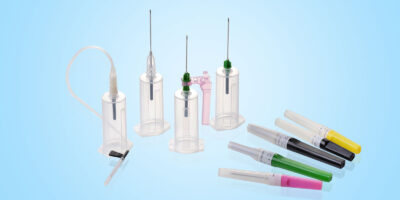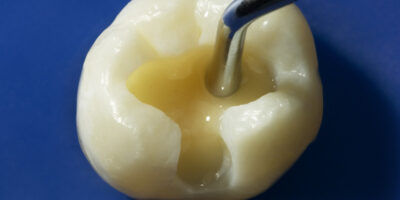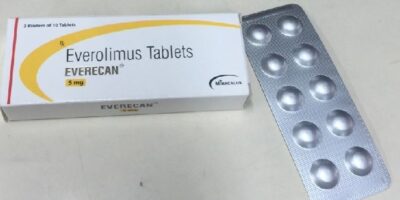Active Wound Care Market size was valued at USD 1,077.9 million in 2021 and is projected to expand at a compound annual growth rate (CAGR) of 4.7% from 2022 to 2030.
The active wound care market focuses on products designed to promote and accelerate the natural healing process of various types of wounds, including chronic wounds, acute wounds, and surgical wounds. This market encompasses a wide range of advanced therapies such as wound dressings, skin substitutes, growth factors, and biological products that aid in tissue regeneration and wound closure.
Market Size and Growth
The active wound care market has been witnessing steady growth due to several key factors:
- Rising Prevalence of Chronic Wounds: Increasing incidences of chronic wounds such as diabetic foot ulcers, pressure ulcers, and venous leg ulcers are driving the demand for advanced wound care products.
- Aging Population: The global aging population, which is more susceptible to chronic wounds and delayed wound healing, is a significant factor contributing to market growth.
- Technological Advancements: Innovations in wound care products, such as bioengineered skin substitutes and growth factor therapies, are enhancing the efficacy of wound healing, fueling market expansion.
Market Trends
- Growth in Biologic and Bioengineered Products:
- Bioactive Dressings: There is a growing demand for bioactive wound dressings, which actively interact with the wound environment to promote faster healing, such as collagen dressings and antimicrobial dressings.
- Tissue-Engineered Skin Substitutes: Skin substitutes that use tissue engineering technology to replace or repair damaged skin are gaining traction, particularly for chronic wounds.
- Shift Toward Advanced Wound Dressings:
- Hydrocolloids and Foam Dressings: Advanced wound dressings, such as hydrocolloids, foams, and alginate dressings, are becoming more popular due to their ability to maintain a moist wound environment, which aids in faster healing.
- Antimicrobial Dressings: Dressings infused with antimicrobial agents, such as silver and iodine, are in high demand due to their ability to prevent infection and promote healing.
- Rising Focus on Chronic Wound Management:
- Chronic Wounds on the Rise: With the increasing number of chronic diseases such as diabetes, which leads to complications like diabetic foot ulcers, there is a growing focus on effective management of chronic wounds to prevent further complications.
- Home Healthcare Services: The rise in home healthcare services is also driving demand for advanced wound care products, as more patients are opting for treatment in home settings.
- Development of Growth Factor Therapies:
- Accelerated Healing: Growth factors, which play a crucial role in cell proliferation and wound healing, are being developed for use in active wound care, particularly for difficult-to-heal wounds.
- Innovative Therapies: The introduction of therapies like platelet-derived growth factors and autologous platelet-rich plasma (PRP) is expected to enhance the market’s growth.
- Increased Adoption of Negative Pressure Wound Therapy (NPWT):
- Advanced Treatment: NPWT, which involves the application of controlled negative pressure to remove fluids and promote blood flow to the wound, is gaining widespread adoption for complex and chronic wounds.
Market Drivers
- Rising Incidence of Diabetes and Obesity:
- Chronic Wounds: The growing prevalence of diabetes and obesity, which are major risk factors for chronic wounds like diabetic foot ulcers and venous ulcers, is a significant driver for the active wound care market.
- Aging Population:
- Slower Healing: As the global population ages, the incidence of chronic wounds and delayed healing is increasing, driving the demand for advanced wound care products.
- Technological Advancements in Wound Care:
- Innovations: Continuous innovation in wound care products, including the development of bioactive dressings, skin substitutes, and growth factor therapies, is contributing to market growth.
- Increase in Surgical Procedures:
- Post-Surgical Wound Care: The rising number of surgical procedures, particularly among the elderly, is leading to increased demand for wound care products that promote healing and prevent infection.
- Government Initiatives and Healthcare Expenditure:
- Support for Wound Care: Government programs and increased healthcare spending to manage chronic wounds and prevent complications are boosting the market.
Challenges
- High Cost of Advanced Wound Care Products:
- Affordability: The high cost of advanced wound care products, including bioengineered skin substitutes and growth factor therapies, can limit their accessibility, particularly in low-income regions.
- Complex Regulatory Requirements:
- Regulatory Approvals: The stringent regulatory requirements for the approval of biologic and tissue-engineered products can be a barrier to market entry for new products and technologies.
- Limited Awareness and Training:
- Clinical Knowledge: In some regions, limited awareness and training among healthcare providers and patients regarding the benefits and proper use of advanced wound care products can hinder market adoption.
- Competition from Traditional Wound Care:
- Preference for Conventional Products: In certain regions, there remains a preference for traditional wound care products, such as gauze and bandages, due to lower costs and easier accessibility.
Future Outlook
The active wound care market is expected to grow steadily in the coming years, driven by several key factors:
- Technological Advancements and Innovation:
- Emerging Technologies: Continuous advancements in bioactive and tissue-engineered products, coupled with the development of novel wound care therapies, are expected to drive the market.
- Expansion in Emerging Markets:
- Rising Healthcare Access: Emerging markets, particularly in Asia-Pacific and Latin America, are witnessing improved healthcare infrastructure and rising disposable incomes, leading to increased adoption of advanced wound care products.
- Increased Focus on Chronic Wound Management:
- Preventive Care: The growing emphasis on preventing and effectively managing chronic wounds, especially among diabetic and elderly patients, will continue to drive demand for active wound care products.
- Adoption of Digital Health and Telemedicine:
- Remote Monitoring: The integration of digital health technologies, such as telemedicine and remote monitoring, is expected to improve wound care management and patient outcomes.
Click Here, To Get Free Sample Report https://stringentdatalytics.com/sample-request/active-wound-care-market/15640/
Market Segmentations:
Global Active Wound Care Market: By Company
Smith and Nephew
Integra Life Sciences
Mlnlycke Healthcare
Baxter
Medtronic
Convatec
Coloplast
Organogenesis
Kinetic Concepts (Acelity)
Medline
Global Active Wound Care Market: By Type
Dressings
Grafts
Global Active Wound Care Market: By Application
Hospital
Clinic
Others
Global Active Wound Care Market: Regional Analysis
The regional analysis of the global Active Wound Care market provides insights into the market’s performance across different regions of the world. The analysis is based on recent and future trends and includes market forecast for the prediction period. The countries covered in the regional analysis of the Active Wound Care market report are as follows:
North America: The North America region includes the U.S., Canada, and Mexico. The U.S. is the largest market for Cold-chain Pharma in this region, followed by Canada and Mexico. The market growth in this region is primarily driven by the presence of key market players and the increasing demand for the product.
Europe: The Europe region includes Germany, France, U.K., Russia, Italy, Spain, Turkey, Netherlands, Switzerland, Belgium, and Rest of Europe. Germany is the largest market for Cold-chain Pharma in this region, followed by the U.K. and France. The market growth in this region is driven by the increasing demand for the product in the automotive and aerospace sectors.
Asia-Pacific: The Asia-Pacific region includes Singapore, Malaysia, Australia, Thailand, Indonesia, Philippines, China, Japan, India, South Korea, and Rest of Asia-Pacific. China is the largest market for Cold-chain Pharma in this region, followed by Japan and India. The market growth in this region is driven by the increasing adoption of the product in various end-use industries, such as automotive, aerospace, and construction.
Middle East and Africa: The Middle East and Africa region includes Saudi Arabia, U.A.E, South Africa, Egypt, Israel, and Rest of Middle East and Africa. The market growth in this region is driven by the increasing demand for the product in the aerospace and defense sectors.
South America: The South America region includes Argentina, Brazil, and Rest of South America. Brazil is the largest market for Cold-chain Pharma in this region, followed by Argentina. The market growth in this region is primarily driven by the increasing demand for the product in the automotive sector.
Click Here, To Buy Premium Report https://stringentdatalytics.com/purchase/active-wound-care-market/15640/?license=single
Frequently Asked Questions About This Report
- How big is the Market?
- What is the Market growth?
- Which segment accounted for the largest Market share?
- Who are the key companies/players in the Market?
- What are the factors driving the Market?
- How has the Covid-19 pandemic affected the Market?
- What is the leading solution segment in the Market?
- What is the leading deployment segment in the Market?
- Which enterprise segment accounted for the largest revenue share in the Market?
About Stringent Datalytics
Stringent Datalytics offers both custom and syndicated market research reports. Custom market research reports are tailored to a specific client’s needs and requirements. These reports provide unique insights into a particular industry or market segment and can help businesses make informed decisions about their strategies and operations.
Syndicated market research reports, on the other hand, are pre-existing reports that are available for purchase by multiple clients. These reports are often produced on a regular basis, such as annually or quarterly, and cover a broad range of industries and market segments. Syndicated reports provide clients with insights into industry trends, market sizes, and competitive landscapes. By offering both custom and syndicated reports, Stringent Datalytics can provide clients with a range of market research solutions that can be customized to their specific needs.
Contact Us
Stringent Datalytics
Contact No- +1 346 666 6655
Email Id- sales@stringentdatalytics.com




Leave a Reply